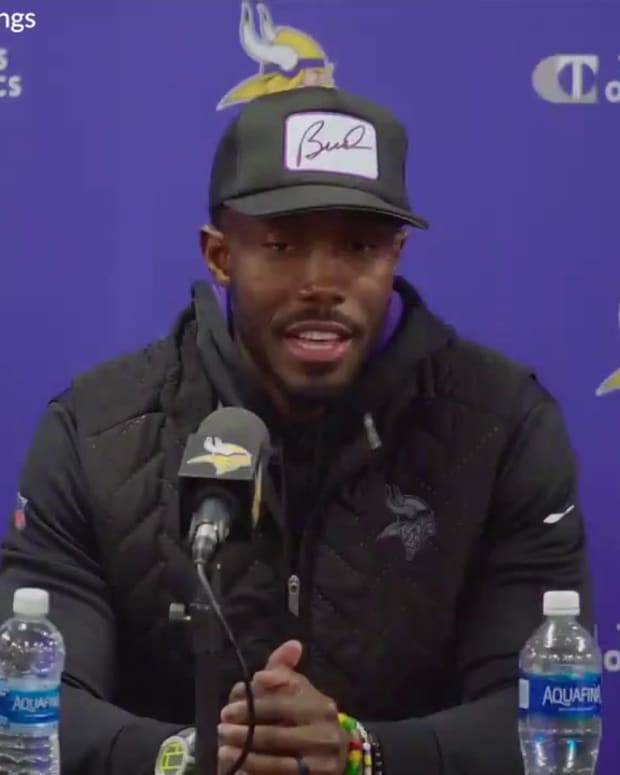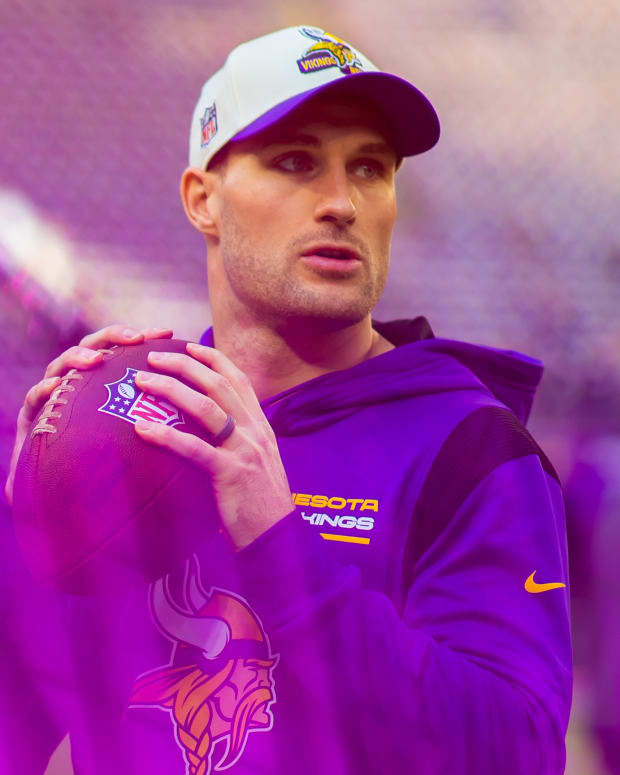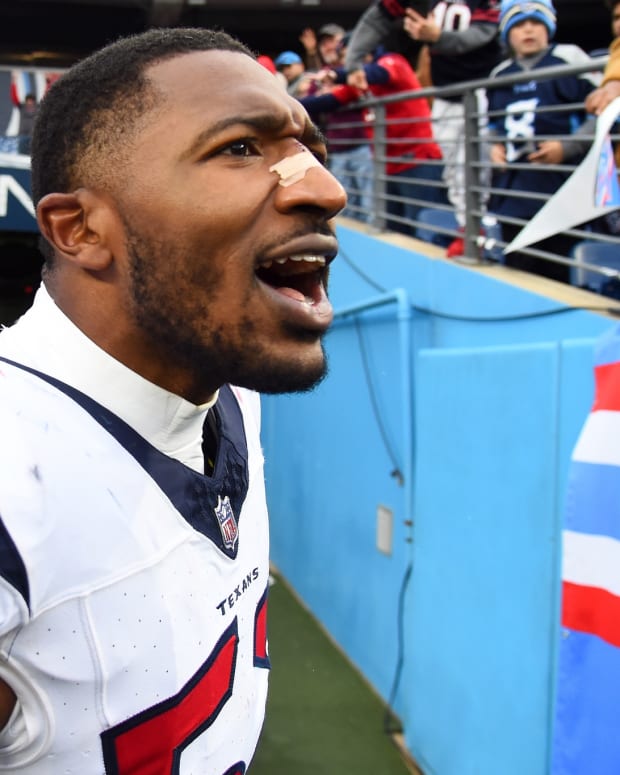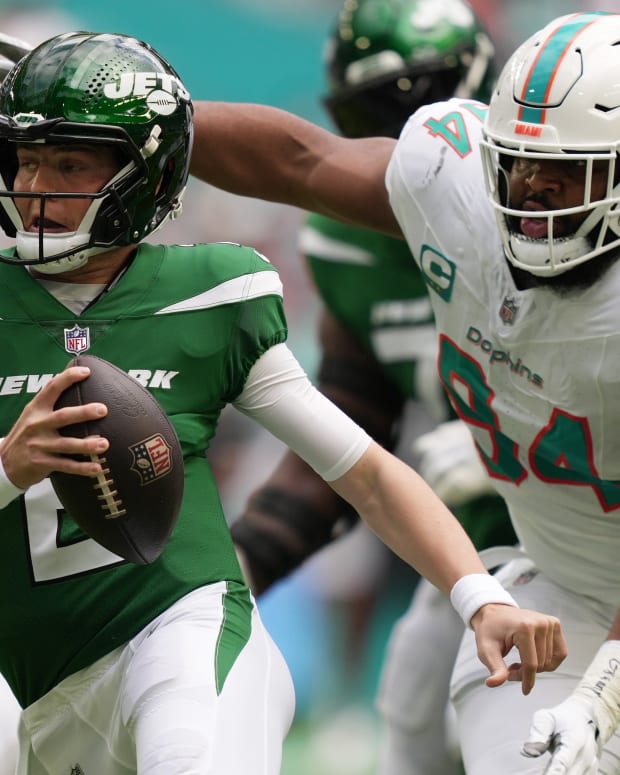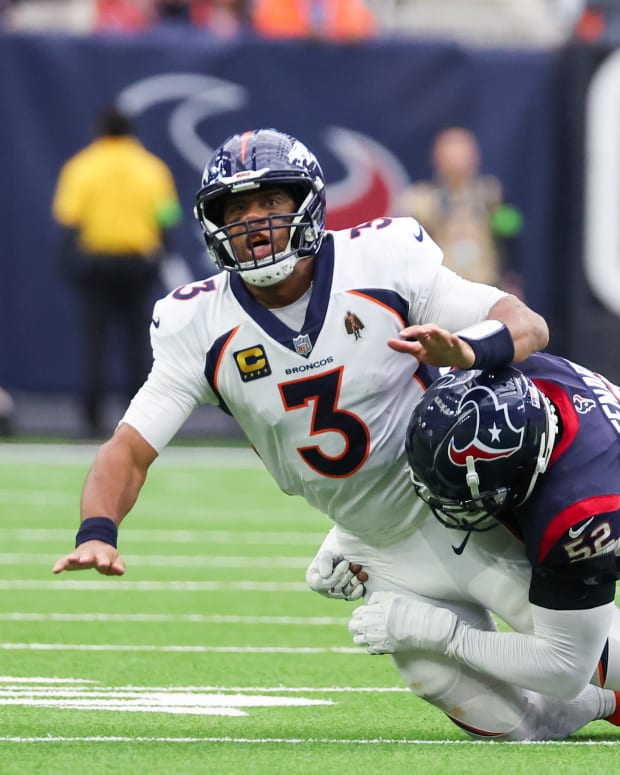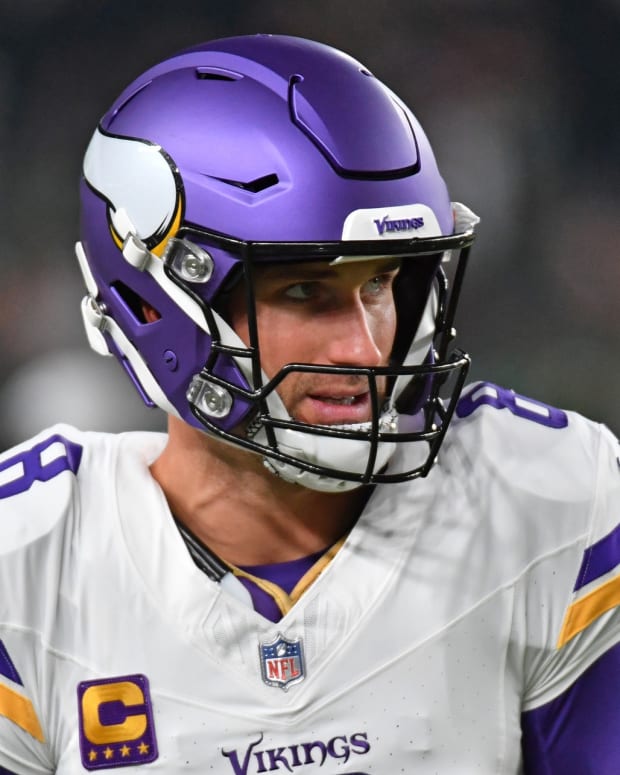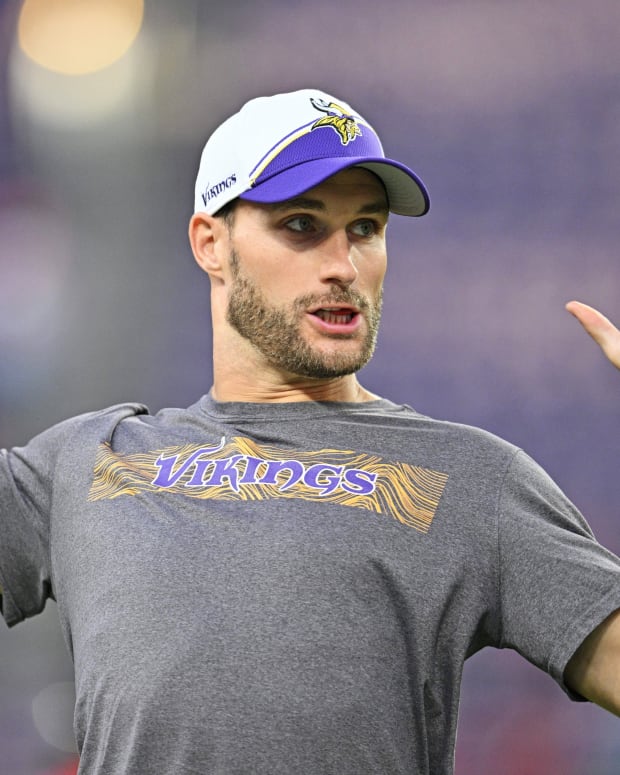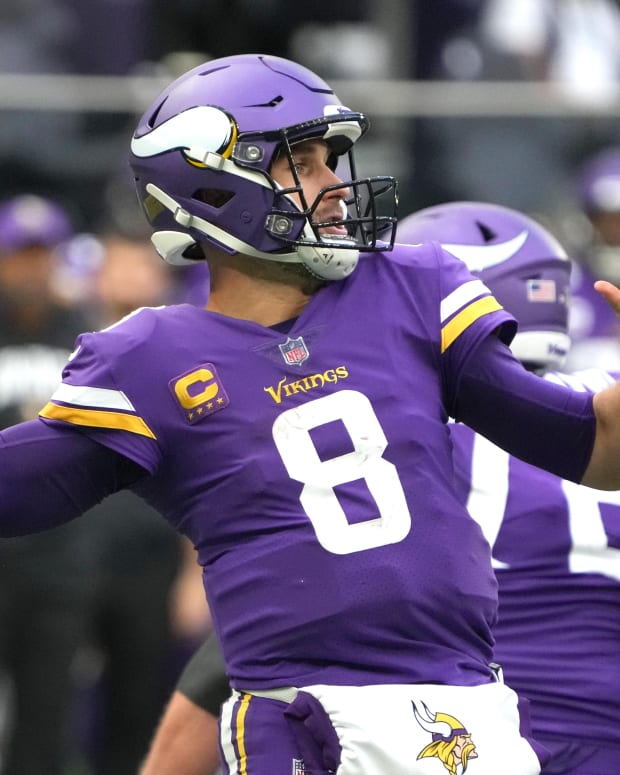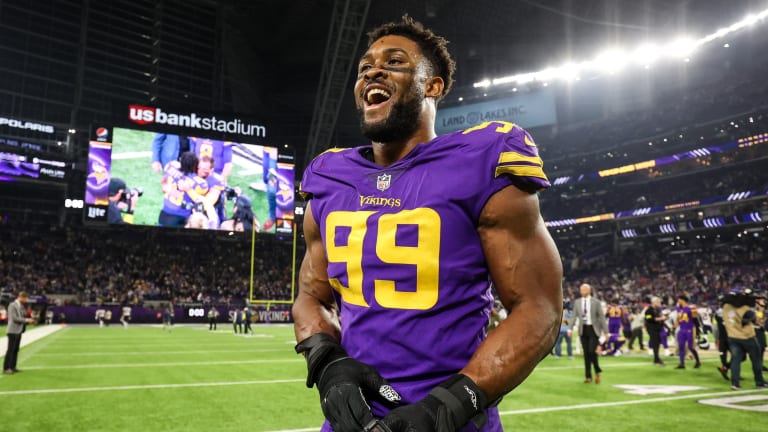
If Danielle Hunter goes, Vikings are a rebuilding team – and that's OK

On Wednesday, NFL Network’s Ian Rapoport reported that teams have been calling about potentially trading for Minnesota Vikings pass rusher Danielle Hunter.
“My understanding is the interest is pretty serious,” Rapoport said. “The Vikings have tried to make this work. Tried to do a band-aid type of deal to compensate him for 2023 and then we'll see after this.”
Hunter may be tired of band-aid deals. After signing a five-year, $72 million extension in 2018, his contract has twice been restructured. As he heads into the final year of his deal, the 28-year-old is looking for commitment and a heck of a lot more cash than the $5.5 million he’s scheduled to make for 2023 (per OverTheCap).
Hunter has a pretty good argument that he’s deserving of a massive raise. He has the eighth most sacks since he entered the league in 2015 and is coming off a season in which he played all 17 games and ranked 17th in sacks, sixth in QB pressures and eighth in PFF grade. Comparable sack artists are presently making between $20-$28 million per season.
The Vikings have a pretty good argument not to pay that much, no matter how good Hunter has been since being picked by the Vikings in the third round of the 2015 draft. They have gargantuan extensions for Justin Jefferson and Christian Darrisaw on the horizon and presumably would like to pay tight end TJ Hockenson as well.
There’s some risk that comes along with Hunter because of his injury history. He missed 2020 with a neck injury and half of 2021 with a torn pec. The milage on his 28-year-old body is significant since he entered the league at age 20. Putting him on the books as a top-five paid player at his position is scary if there is any belief that his production could dip in the coming years. The Vikings likely have a price that they would pay to keep him and a price that they would take to send him packing. As wonderful as he’s been as a Viking, that’s the economics of a salary-capped league.
He’s also worth a lot in the trade market. Last year the Chargers got Khalil Mack for a second and a sixth-round pick and he was older and coming off a year in which he only played seven games. Hunter could net even more.
There is a bigger significance of the Hunter situation that goes beyond normal business. If Hunter is traded, the Vikings will have let 177 QB pressures, 23 sacks, six interceptions and 19 pass breakups walk out the door between Hunter, Za’Darius Smith, Dalvin Tomlinson, Duke Shelley and Patrick Peterson. Not to mention the 1,094 snaps and 137 tackles that belonged to Eric Kendricks and 70 pass receptions that came from Adam Thielen. Oh, and they have reportedly moved on from Dalvin Cook, so there goes 1,468 yards from scrimmage and 10 touchdowns.
If Hunter and Cook exit, the only Vikings over 30 years old will be Kirk Cousins, Harrison Smith, Jordan Hicks, backup guard Chris Reed and long snapper Andrew DePaola.
The list of unproven key players on both sides of the ball is much, much longer. A quick rundown: Lewis Cine, Andrew Booth Jr., Akayleb Evans, Brian Asamoah, DJ Wonnum, Patrick Jones, Jordan Addison, Alex Mattison, Ed Ingram and numerous others who could arguably fall into the uncertain category like Ezra Cleveland, Marcus Davenport, Ty Chandler, Makhi Blackmon, Josh Megellus etc.
The only things that are not rebuild-y about the Vikings are: Kirk Cousins, Justin Jefferson, Harrison Smith and the two elite offensive tackles.
The fact is that the Vikings could reasonably have a top 10 offense, which makes them competitive in the NFC by itself, but we shouldn’t conflate the concepts of rebuilding and tanking. They are very different things.
Rebuilding is moving on from older, expensive players in favor of recent draft picks that either will become good/inexpensive or reveal where money needs to be spent in the future. Rebuilding is creating salary cap flexibility for the future rather than being limited by massive contracts for a handful of players. Tanking would be intentionally playing replacement-level players in order to lose as many games as possible to draft high i.e. the 2023 Chicago Bears. Tanking is purposefully giving your roster no chance to compete.
The Vikings fit the rebuilding category, not tanking. Not that it would be crazy for the Vikings to tank if they trade Hunter and Cook but GM Kwesi Adofo-Mensah said at the NFL Combine that he didn’t believe in the tank approach. We can assume the Vikings’ ownership feels that way as well.
But as far as rebuilding goes, you could argue that this type of approach is overdue. Since reaching the NFC Championship in 2017, the Vikings repeatedly overpaid to keep their own players and took desperate swings at filling holes with trades like acquiring Yannick Ngakoue for a second-round pick or Chris Herndon for a fourth. It would appear more prudent in this situation to refresh the majority of the roster rather than flailing to keep it all together.
Adofo-Mensah has shown already this offseason that he’s only negotiating with his numbers. Patrick Peterson said the Vikings made an offer but weren’t willing to go as high as the Steelers. It was reported that the Vikings gave Adam Thielen an option to stay but only at their price so he chose to leave. That’s better business in their current state — as the team with the 15th best Super Bowl odds — than damaging their cap future to keep veterans around to squeeze one more year out of them.
Hunter is a different though — a little harder to swallow for Vikings fans than letting players go who were fading. Hunter is still great and could remain great for years to come. Trading him would feel like a very aggressive play for the future and drop the chances significantly of improving on defense, even if Brian Flores’s scheme makes much more sense than Ed Donatell’s did last year.
But the Vikings didn’t hire Adofo-Mensah to do the same things as his predecessor. They didn’t hire him to chase the past. They brought him in to see the future and spend like an economist.
If that’s what he does, the Vikings may have better odds to open a Super Bowl window in the near future. Of course that’s going to depend on a lot of factors, particularly what happens at quarterback but timelines and winning windows are everything in this league and taking the long-term approach has paid off for many savvy teams in the recent past — most notably the Eagles, who reset their roster and struggled in 2020 and found themselves in the Super Bowl two years later.
That doesn’t always happen. There’s always a possibility of the team trading away a great player and failing to replace him. It’s not easy to find another Hunter. Though defense is more of a weak-link system, as we saw last year when multiple players performed at a Pro Bowl level and they still finished 27th in points allowed.
If the Vikings keep Hunter and make him one of the highest paid players at his position, it’s hard to complain about. It’s not like he’s on the cusp of retirement. It will, however, still leave us in a little more limbo about where the Vikings stand in their roster approach. If he stays, should they try to add more last-minute free agents to help them compete right away? Or basically burn a year of Hunter’s new deal as they revamp everything else around him? Or hope that all the unknowns become good and they’re more competitive than the Vegas lines suggest.
As we head into the final week of the spring portion of the offseason, the Vikings are walking up to the precipice of a new age for arguably the first time since 2014 when Mike Zimmer took over. It could be a little frightening, a little exciting but altogether inevitable that the chase to repeat 2017 with the same group was eventually going to come to an end. Trading Hunter would officially mark that era as over.
